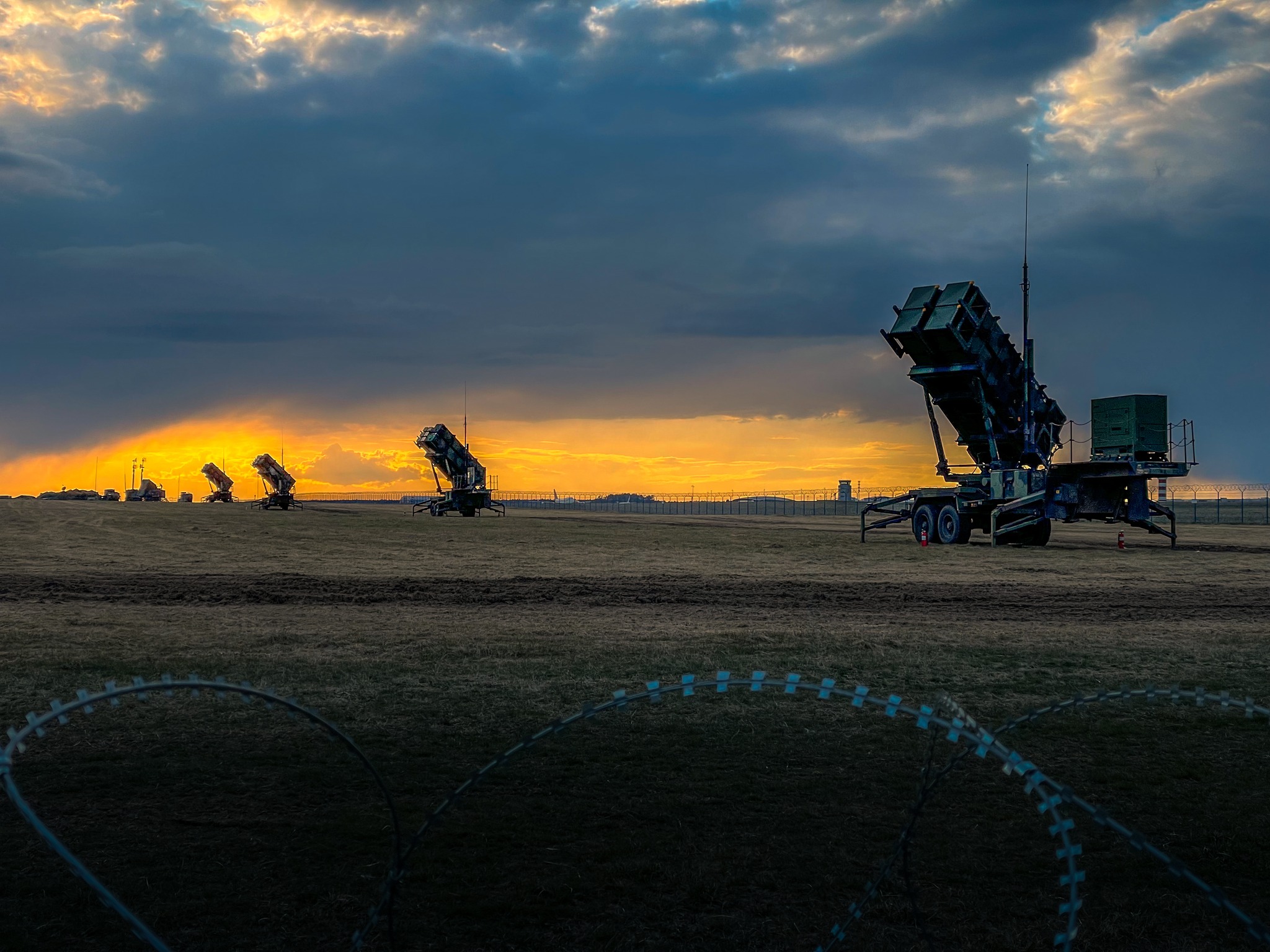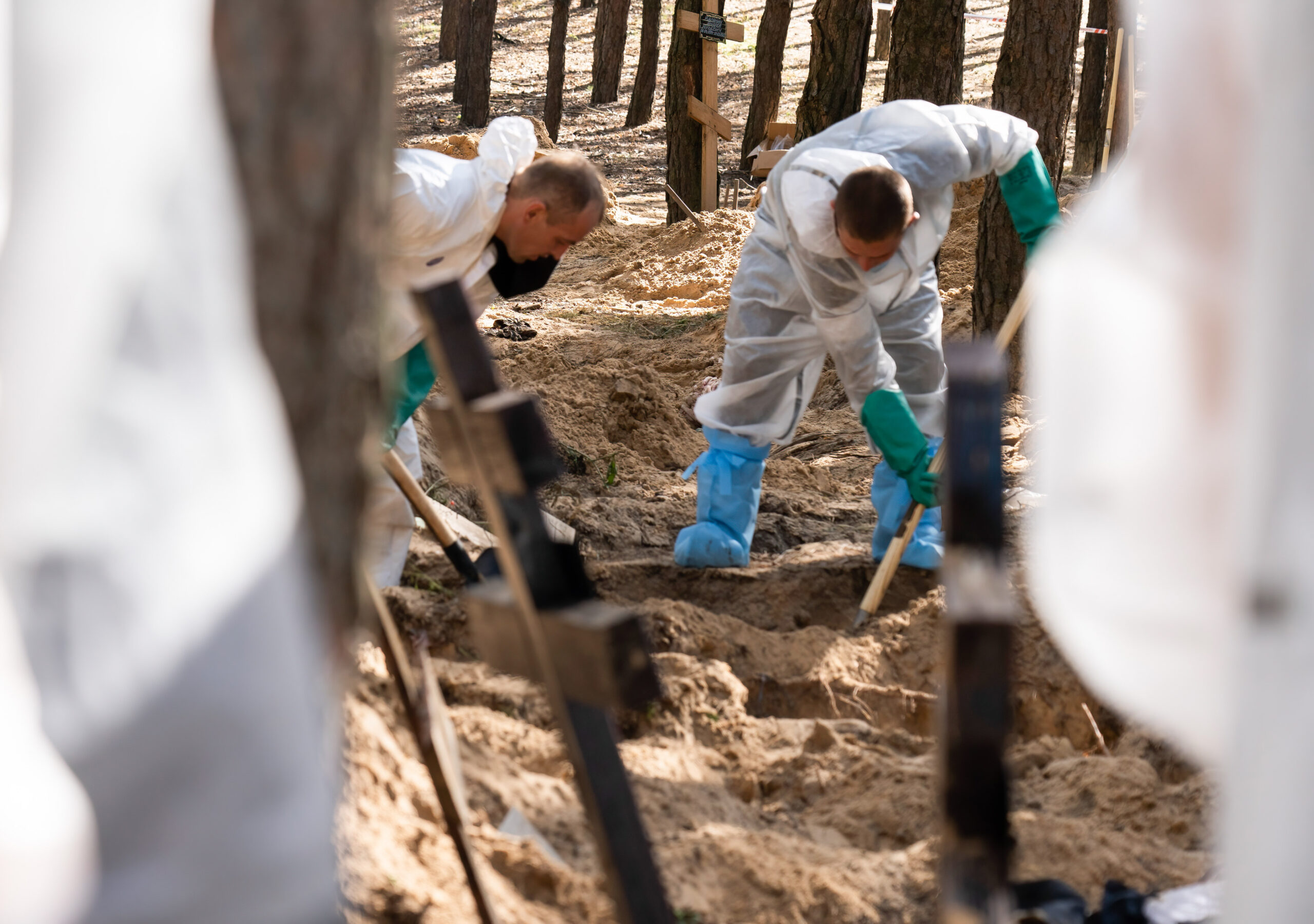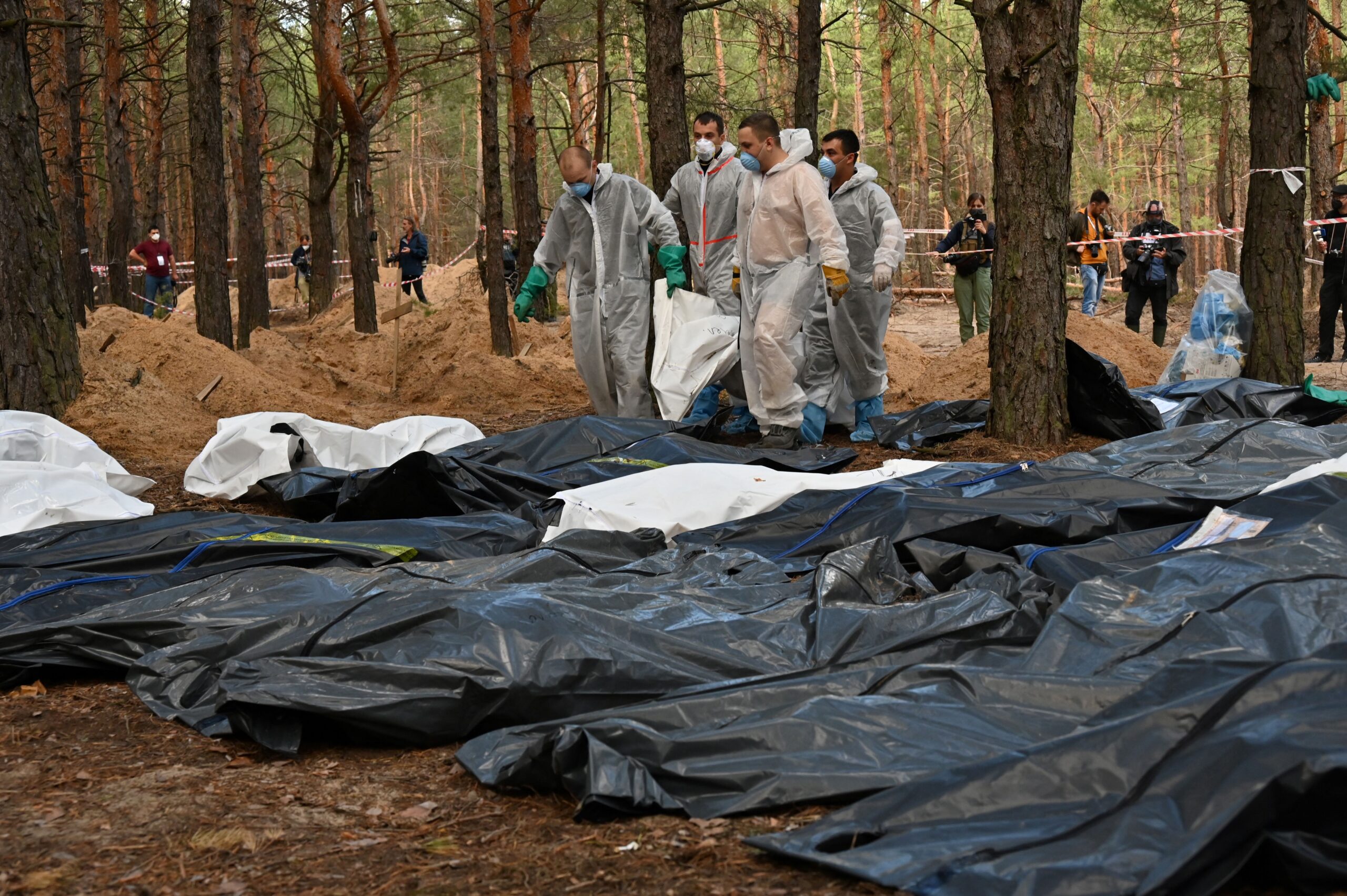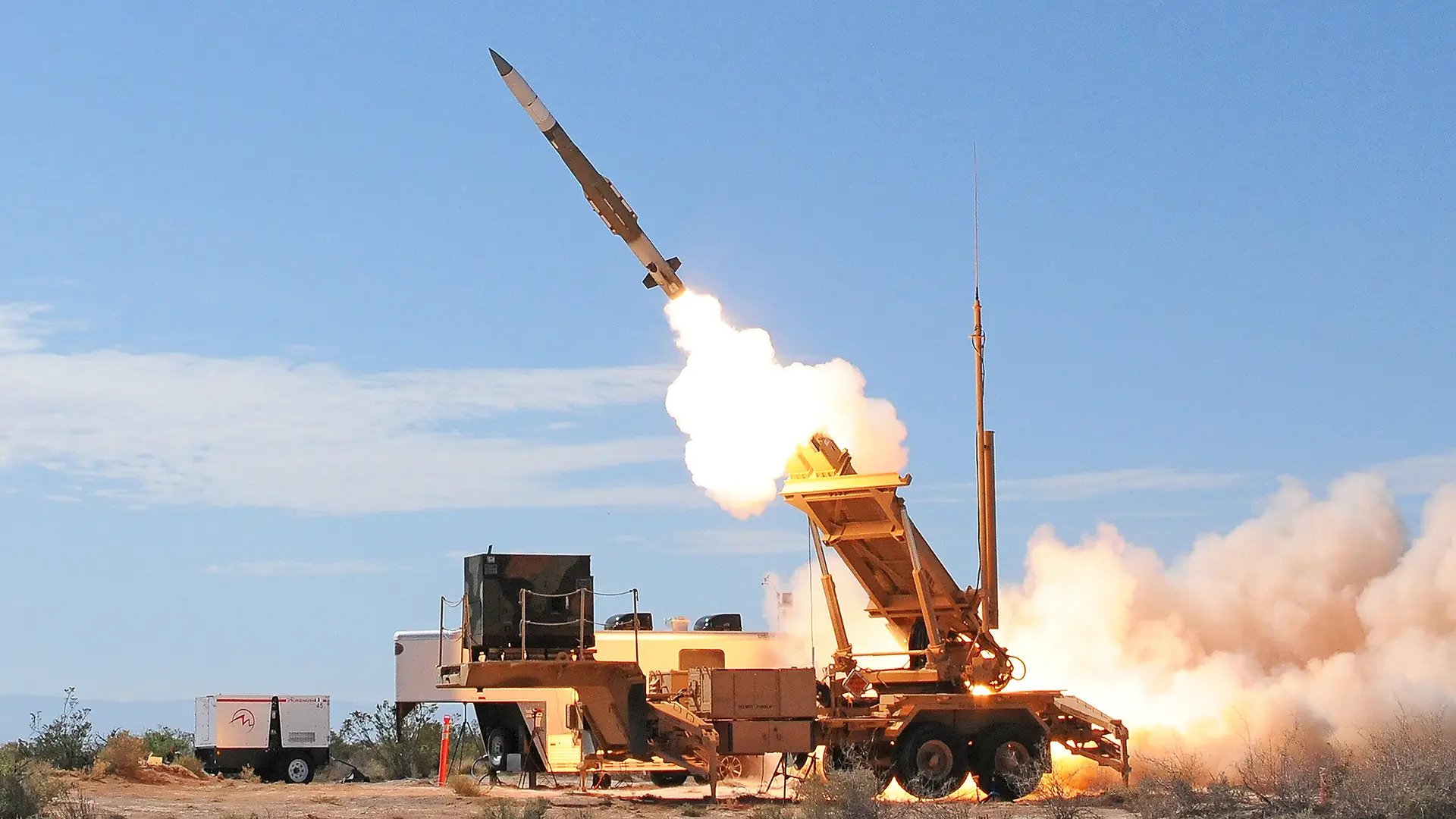Poland will station a German-provided, U.S.-manufactured Patriot air defense system along its border with Ukraine, Polish Defense Minister Mariusz Błaszczak said Monday.
“I accepted with satisfaction the proposal of the German Minister of Defense regarding the deployment of additional Patriot missile launchers in our country,” Blaszczak said in a tweet. “During today’s telephone conversation with the German side, I will propose that the system be stationed at the border with Ukraine.”
The move comes in the wake of an incident last week in which a stray missile landed in Polish territory near the Ukrainian border, killing two people.
NATO, Polish leaders and Polish, U.S., and other NATO officials say the available evidence is increasingly pointing to an errant Ukrainian surface-to-air missile being responsible for that incident. However, details about the specific circumstances remain murky. You can read more about that here.
Blaszczak said that as of Monday, it was unclear which version of the Patriot system would be provided by Germany, how quickly it would be provided or how long it would be stationed in Poland.
Earlier this year, the Pentagon sent two Patriot batteries to Poland, which is seeking to purchase six more.

During the Cold War, Germany had 36 Patriot units when it was NATO’s frontline state, according to Reuters. German forces currently have 12 Patriot units, two of which are deployed to Slovakia.
Germany has Patriot Advanced Capability-3 interceptor (PAC-3) versions and a limited number of PAC-3 Cost Reduction Initiative (CRI) versions, David Shank, a retired Army colonel and former head of the Army Air Defense Artillery School at Fort Sill told The War Zone Monday.
Ukrainian Air Force spokesman Yuri Ignat on Monday told reporters at the Ukrainian Media Center he hoped the German Patriot batteries deployed near the Ukrainian border would be used to protect both Polish and Ukrainian skies.
“Starting from the beginning of the full-scale invasion [by] the Russian aggressor, everybody asked the whole world to cover the Ukrainian skies. To provide arms to Ukraine. To provide aircraft to Ukraine. We would like, at least in that part of the front, to protect our skies with this air defense system.”

A Patriot battery on the border could swat down threats heading to nearby population centers in far western Ukraine, but doing so would set a new level of direct involvement in the conflict for NATO.
The Patriot system can help defend Ukrainian skies even without firing any interceptors, Shank said. Depending on a number of factors, including location, Ukraine could possibly integrate data from the Patriot radars stationed in Poland into its own air defense systems to defend its assets.
“If systems are integrated into a shared network, then yes the Poland-based Patriot systems could share early warning data from their systems without engaging targets not within range,” said Shank. Those systems, he said, could be ground-based, or airborne, like the E-3 Sentry Airborne Warning And Control System (AWACS) aircraft.
Brig. Gen. Krzysztof Nolbert, Poland’s Defense, Military, Naval and Air attache at the Polish Embassy in Washington D.C. told The War Zone that he did not have any details on rules of engagement or operational cooperation with Ukraine.
“It would be a completely separate topic (a heavy one) in hands of military planners carried out with strong involvement of NATO I believe,” he said in an email.
Ignat also said that last week’s massive Russian barrage of 96 missiles is not something Moscow can repeatedly sustain.

“They have to accumulate their reserves,” he said, adding that Ukraine managed to shoot down 75 of those missiles.
“Our Western partners are wondering how [we] can work on this number of targets,” Ignat said. “The answer is easy. Ukrainian Air Force’s Air Defense Forces have significant experience and it’s been achieved by a difficult price. We have losses in this field. It’s not only the air defense forces shooting down the missiles but there are mobile fire groups and aviation. So the portable air defense weapons are also used for shooting down the rockets.”
Still, Ukrainian officials want a much more comprehensive air and missile defense system.
While Ukraine does not have enough air defense systems, Ignat said that Russia, which is still producing them, has enough to be able to use S-300s as ballistic missiles firing at Ukrainian targets from a distance of about 150 kilometers (about 93 miles). The War Zone was among the first to report on this tactic back in early July. And now, short on purpose-built standoff land attack weapons, it appears they are going to move S-400 systems, currently deployed to Belarus, to the Donbas to “inflict strikes on the infrastructure of the cities not only along the front line, but also against our troops or military units. Our military management is aware of it and we do all we can to protect ourselves against it.”
Before heading into today’s news from Ukraine, The War Zone readers can get caught up on our previous rolling coverage here.
The Latest
On the battlefield, there has been “some stabilization of the frontline in the Kherson region along the Dnipro River,” Ignat told reporters Monday morning. “The enemy is getting reinforced on [the east] bank the same way they reinforce their air defense system that we will need to destroy sooner or later.”
Russians are also firing back at Ukrainian forces in newly liberated Kherson City.
Meanwhile, fighting remains fierce in Donetsk and Luhansk, without any major territory gains or losses by either side over the past 24 hours. Here are some key takeaways from the latest Institute for the Study of War assessment:
- The Ukrainian Main Military Intelligence Directorate (GUR) reported on Nov. 20 that Russian special services are planning false flag attacks on Belarusian critical infrastructure facilities to pressure the Belarusian military to enter the war in Ukraine. The Ukrainian General Staff added that Ukrainian officials have not observed the formation of any Belarusian assault groups. ISW continues to assess that it is unlikely that Belarusian forces will invade Ukraine.
- Russian and Ukrainian sources reported ongoing fighting along the Svatove-Kreminna line on Nov. 20. Russian sources noted that deteriorating weather conditions are impacting hostilities.
- A Ukrainian military official stated that Ukrainian forces have liberated 12 settlements in Luhansk Oblast since the start of the eastern counteroffensive.
- The Russian Ministry of Defense (MoD) claimed to strike a Ukrainian troop concentration in the area of Novoselivske, Luhansk Oblast. The Russian MoD previously claimed to repel Ukrainian attacks on the settlement, and this claim might indicate that Ukrainian forces advanced to the settlement.
- Russian forces continued offensive operations in the Bakhmut, Avdiivka, and western Donetsk directions.
- Ukrainian officials reported that Russian forces continued to transfer some forces from the east (left) bank of the Dnipro River to other operational directions, but still maintain a significant force presence in southern Kherson Oblast.
- Ukrainian and Russian sources reported that shelling damaged the infrastructure of the Zaporizhzhia Nuclear Power Plant (ZNPP). One Russian milblogger claimed that the shelling came from Russian-controlled territory south of the plant, but most Russian sources accused Ukraine.
- Russian occupation officials may have purged the occupation Mayor of Enerhodar Alexander Volga. Some Russian sources claimed that Volga received a promotion within the occupation administration.
- Russian military officials continued mobilization measures amid reports of ongoing resistance and poor conditions.
The weather seems to be having an effect on both sides.
Mud in particular has been an issue, seen below making things tough for a French-donated VAB armored personnel carrier.
And this MaxxPro MRAP also had trouble navigating the muck.
Ukrainian President Volodymyr Zelensky said that Russia has launched more than 4,700 missiles at Ukraine since its all-out invasion and that the recent Russian attacks on Ukraine’s energy infrastructure has left 20 million people without power.
Given that and more, could Russian President Vladimir Putin be culpable for war crimes?
Quite possibly, according to Ambassador-at-Large for Global Criminal Justice Beth Van Schaack.
“There are doctrines under international law that allowed for prosecutions to go all the way up the chain of command,” Van Schaack told reporters, including from The War Zone, Monday morning. “Pursuant to this doctrine of superior responsibility, superiors can be held liable for the acts of their subordinates. If a superior knew or should have known that their subordinates were committing abuses, and a superior failed to take the necessary measures to either prevent them in advance or to appropriately investigate them and prosecute them after the fact.”

That doctrine exists and can be utilized by national courts and the International Criminal Court as necessary, she said.
“So prosecutors will follow the evidence where it leads. But when we’re seeing such systemic acts, including the creation of a vast filtration network, it’s very hard to imagine how these crimes could be committed without responsibility going all the way up the chain of command.”
The filtration network Van Schaack was referring to is the systemic effort by Russian troops to remove Ukrainian citizens from Russia.
The exact numbers of such individuals “are hard to come by,” she said, because people are brought into Russia three main ways. First, they may be allowed to continue to live in Russian-controlled or or occupied areas within Ukraine. Second, they may be deported into Russia and often very far-flung parts of Russia. And third, if they failed filtration, they may be subjected to detention.
“And this can include terrible conditions of life and extreme mistreatment, including potentially summary executions.”
Satellite imagery observed by the U.S.-funded Conflict Observatory, she said, “seems to show the creation of mass graves in the vicinity of one of the filtration sites. So this is obviously extremely worrisome. Again, even with the children, it’s difficult to know. The Ukrainians are trying to gather this information from families who are able to identify that their children have gone missing because they’ve been abducted and potentially brought into Russia. But gathering the complete numbers has been a bit of a challenge. And so we’re continuing to track that.”
Putin’s “war against Ukraine continues to result in devastating human costs,” said Van Schaack. “Thousands of civilians killed or wounded. At least 13 million Ukrainian citizens forced to flee their homes. Cities have been literally poured to rubble. The aggression against Ukraine and the manifest violation of the U.N. Charter – and we have matching evidence that this aggression has been accompanied by systemic war crimes committed in every region where Russian forces have been deployed.”

The evidence, she said, includes “deliberate, indiscriminate and disproportionate portion of attacks against the civilian population and elements of the civilian infrastructure. We’re seeing custodial abuses of civilians and POWs and also efforts to cover up these crimes. We have reports of citizens being killed execution-style, with hands bound. We have bodies that showed signs of torture. We have horrific accounts of gender-based violence, including sexual violence against women and children. Ukraine’s Office of the Prosecutor General has already identified thousands of incidents that may constitute war crimes, and all of this without yet knowing what is unfolding in areas that are still under Russia’s occupation for control. And so we expect that additional evidence will continue to manage as these areas are liberated.”
Van Schaack said she is also tracking reports that Ukrainian soldiers killed surrendering Russian troops last week. However, that incident is in dispute.
“We are obviously tracking that quite closely,” she said. “It’s really important to emphasize that the laws of war apply to all parties equally, both the aggressor state and the defender state and in equal measure.”
Ignat on Monday also told reporters that he doesn’t know if Iran still plans on sending Russia short range ballistic missiles. Ukrainian intelligence officials had previously said they anticipated Iranian Fateh-110 and Zolfaghar missiles would arrive in Russia sometime this month, along with an additional tranche of drones, something we wrote about here. But he also said that Iran is transferring blueprints for its drones to Russia to avoid incurring sanctions for selling them directly.
Citing new intelligence seen by the U.S. and its western allies, The Washington Post previously reported that Iran and Russia had “quietly” reached an agreement to begin assembling “hundreds of unmanned weaponized aircraft” on Russian territory. Russia has been using Iranian-made Shahed-136 kamikaze drones against Ukraine since September.
When asked whether there is still a possibility of Iran transferring missiles to Russia, Ignat suggested that due to “certain diplomatic factors,” this process could slow down, but it is “worth preparing for everything,” according to the Kyiv Independent.
The U.S., which has already provided Ukraine with more than $20 billion in assistance, will support Ukraine “for as long as it takes,” Defense Secretary Lloyd Austin told reporters Indonesia Monday.
“As we go forward into the winter, we’ve done a lot to try to prepare the Ukrainians to be prepared for a fight…and then enable them to continue to keep pressure on their adversaries throughout the winter months,” Austin said. “I think they’ll be in much better condition than their adversaries because of the things that we provide. Our focus is to support them… Their focus is to make sure that they’re doing everything to take back every inch of their sovereign territory. So it’s hard to predict how things will evolve and on what timeline, but we’re in this in support of Ukraine for as long as it takes.”
The prime ministers of Poland and Finland also weighed in with their support for Ukraine.
In addition to older Brimstone 1 anti-tank weapons, Ukraine has also received newer, longer-range Brimstone 2 anti-tank weapons from the U.K., according to the Ukraine Weapons Tracker OSINT group.
Ukraine has also received two Crotale short-range air defense systems and two multiple-launch rocket systems, according to the French Le Journal du Dimanche news outlet.
Luxembourg will send Ukraine more Humvees.
Russia meanwhile has lost more than 8,000 pieces of military equipment since launching its all-out war, according to the Oryx OSINT analysis group.
They are also losing vital supplies, like fuel and oil.
The Russians continue to lose personnel as well, in this case as the result of artillery fire.
Ukrainian snipers are also taking out Russians.
So too are Ukrainian drones.
And Ukrainian anti-tank guided missiles continue to destroy Russian armor.
Ukraine continues to collect Russian “trophies,” like this T-80BVM tank.
Russia’s mobilized reservists continue to struggle on the battlefield.
They are also still poorly supplied and often housed inadequately.
It appears that some of those servicemen were arrested for refusing to go to the combat zone.
Russian propagandist Vladimir Solovyov suggested that Russia can use tactical nuclear weapons against Germany if war is declared.
But it also appears the fiery Putin mouthpiece is getting some push-back from other guests on Russian state TV.
Meanwhile, it appears that Russian combat correspondents are starting to gain an independent voice, despite harsh censorship at home.
Ukraine’s Mi-8 Hips continue to provide fire support.
And doing a little helo ‘low-riding’ in between missions for fun.
That’s it for now. We will update this story if there is anything major to add until our next new update is published.
Contact the author: howard@thewarzone.com
